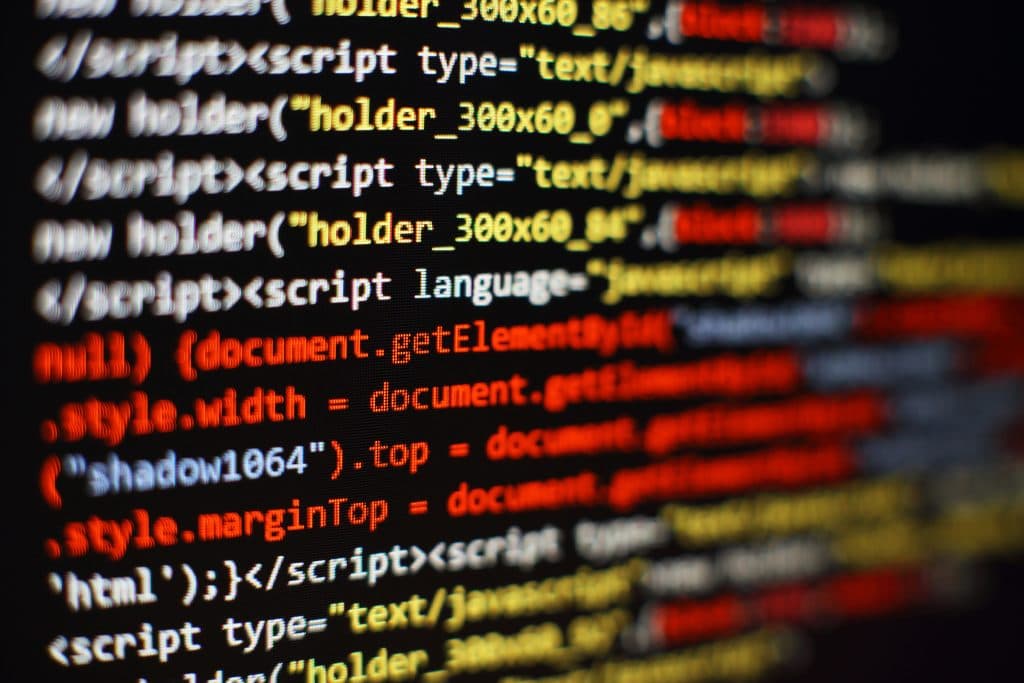Trends in Agriculture Software Development Services
Discover latest trends shaping Agriculture Software Development Services. Explore innovations driving farm tech in this insightful article.
The world of agriculture is evolving at a fast pace, embracing technology-driven innovations that are revolutionizing traditional farming practices. In this article, we will dive deeper into how the latest trends in agriculture software development services, including the Internet of Things (IoT), machine learning (ML), and blockchain, are reshaping the agricultural landscape in profound ways.
Latest Trends in Agriculture Software Development Services
Internet of Things (IoT) Applications
The Internet of Things (IoT) is driving a fundamental shift in agriculture software development services by providing real-time data and control over various aspects of farming operations. IoT involves the deployment of a network of sensors and devices across farms, creating a web of interconnected data sources. Let’s explore how IoT is redefining agriculture in greater detail:
Optimized Resource Management
IoT sensors, meticulously placed throughout fields, collect data on soil moisture, nutrient levels, and weather conditions. This data is relayed to farmers’ devices, enabling them to make data-driven decisions.
For instance, when soil sensors detect a decrease in moisture levels, farmers can remotely activate irrigation systems precisely where and when needed, minimizing water wastage. This level of resource optimization not only conserves valuable resources but also reduces operational costs.
Weather Insights
IoT weather stations provide hyper-local weather data to farmers. This information is invaluable for making timely decisions regarding planting, harvesting, and weather-related risks. Farmers can take precautions against adverse conditions like frost, drought, or heavy rainfall.
Livestock Management
Beyond crop cultivation, IoT is transforming livestock management. Wearable devices equipped with sensors are used to monitor the health and well-being of animals. These devices track vital signs, activity levels, and even the location of livestock.
Therefore, farmers can identify early signs of illness, optimize feeding schedules, and ensure the comfort of their animals. As a result, livestock become healthier, more productive, and less prone to diseases, ultimately benefiting both farmers and consumers.
Machine Learning in Agriculture
Machine learning, a subset of artificial intelligence (AI), is playing an important role in reshaping agriculture through data analysis and predictive modeling.
Precision Farming
ML algorithms analyze a wide range of data points, including historical weather data, soil quality and crop types. These algorithms generate precise planting schedules, guiding farmers on when and where to plant crops. By tailoring planting decisions to specific conditions, farmers maximize yields and reduce resource wastage. This level of precision contributes to sustainable farming practices while increasing profitability.
Crop Disease Prevention
ML models can predict the onset of crop diseases by considering factors like weather patterns, historical disease outbreaks and crop health data. Armed with these insights, farmers can take proactive measures such as targeted pesticide applications or adjusting planting schedules. This not only reduces the need for chemical interventions but also protects crop health and yields.
Blockchain for Supply Chain Management
Supply chain management in agriculture has faced numerous challenges, from traceability issues to fraudulent practices. Blockchain technology is offering solutions to these problems.
Transparency and Trust
Blockchain creates an immutable ledger that records every transaction and movement of products in the supply chain. Consumers can trace the journey of their food products from the farm of origin to their table. This transparency increases trust and confidence in the food supply chain. Consumers can verify the authenticity of organic labels or check if their produce is sustainably sourced, creating a direct link between farmers and consumers.
Rapid Traceability
In the unfortunate event of a food safety issue, blockchain enables rapid traceability. Identifying the source of contamination becomes a matter of seconds, not days or weeks. Swift identification allows for precise recalls, reducing the impact on consumers and preventing the spread of contaminated products.
Efficient Transactions
Smart contracts, facilitated by blockchain, automate transactions and payments within the supply chain. Farmers receive prompt and fair compensation for their produce. This financial security is particularly beneficial for small-scale farmers, enabling them to access markets and invest in their operations with confidence.
How These Trends Reshape Agriculture
The adoption of IoT, machine learning, and blockchain in agriculture software development services goes beyond just technological integration. These trends are fundamentally reshaping the agricultural landscape in the following ways:
Efficiency and Resource Optimization
The adoption of IoT and machine learning in agriculture has ushered in a new era of efficiency and resource optimization. Gone are the days of manual resource allocation and guesswork. Now, farmers can make data-driven decisions that optimize the use of critical resources such as water, fertilizers and pesticides.
Imagine a scenario where soil sensors, strategically placed throughout a vast field, continuously collect data on moisture levels, nutrient content, and pH levels. This real-time information is instantly transmitted to a farmer’s device, allowing them to remotely adjust irrigation systems with pinpoint accuracy. As a result, water usage is optimized, and the risk of over-irrigation, which can leach nutrients and harm the environment, is significantly reduced.
Machine learning algorithms take this resource optimization a step further by optimizing planting schedules. These algorithms consider a multitude of variables, including historical weather data, soil quality and market demand. For instance, when a predictive model suggests that a particular field is ideal for planting a specific crop due to favorable weather conditions, the farmer can make a timely decision to maximize yield potential.
This precision in resource management not only conserves valuable resources but also reduces operational costs. In an industry where profit margins can be low, these savings can make a significant difference in a farmer’s bottom line.
Sustainability
Data-driven decision-making, enabled by IoT and machine learning, facilitates practices like precision farming. With the ability to precisely allocate resources, farmers can minimize their environmental footprint. For example, when sensors indicate that a field is adequately moist, irrigation systems can be automatically turned off, reducing unnecessary water usage.
Moreover, the ability to predict and prevent crop diseases through machine learning reduces the reliance on chemical pesticides. Farmers can adopt integrated pest management strategies, which involve using pesticides sparingly and only when necessary. This not only saves money but also protects the environment and reduces the risk of pesticide-resistant pests.
Food Safety and Trust
Blockchain technology, with its transparency and immutability, has revolutionized food safety and product authenticity. This is especially vital in an era where consumers demand transparency in the food supply chain.
With blockchain, every step of the journey from farm to table is recorded as an immutable block. Consumers can scan a QR code on a product and access a wealth of information about its origin, production methods, and safety standards. They can verify if a product is truly organic or sustainably sourced, building trust between farmers and consumers.
This newfound level of transparency fosters trust and confidence in the food supply chain. Consumers can have peace of mind knowing that the products they purchase are of high quality and safe to consume.
Cost Reduction
The adoption of these trends, particularly IoT and machine learning, has the potential to substantially cut costs for farmers. Automation of tasks, such as remote irrigation control based on sensor data, reduces the need for manual labor. This not only saves time but also minimizes labor costs. Similarly, predictive maintenance of equipment through IoT sensors can prevent costly breakdowns and downtime.
Machine learning algorithms also contribute to cost reduction by optimizing resource usage. By precisely scheduling planting and harvesting, farmers minimize waste and resource overuse. For instance, if a machine learning model suggests delaying planting by a few days due to unfavorable weather, it can save a farmer both time and resources.
Global Market Expansion
Enhanced supply chain management, facilitated by blockchain, has opened doors to global markets for farmers. With the assurance of product quality and safety standards provided by blockchain, farmers can confidently participate in international trade.
Blockchain’s smart contracts automate transactions and payments, reducing the complexities and delays associated with cross-border trade. Small-scale farmers, in particular, benefit from this financial security, as they can access global markets with assurance and compete on a level playing field with larger producers.
This global market expansion not only boosts farmers’ incomes but also contributes to the diversification of agricultural products available worldwide. Consumers in distant regions gain access to a broader range of high-quality, locally sourced produce.
Conclusion
The trends in agriculture software development services, driven by IoT, machine learning, and blockchain, are not just technological advancements; they represent a profound transformation of the agricultural landscape. As they continue to evolve, we can anticipate even more groundbreaking innovations that will further reshape agriculture and secure its future in an constantly changing world.
As a top-tier IT outsourcing company, 8Seneca delivers outstanding services to our partners. Our dedicated team of IT experts is poised to tackle your most complex business requirements, promising efficiency, timeliness, and unmatched quality for global clients. Get in touch with us now.
Related Articles

Jul 22, 2025
Read more
The Cost of Hiring the Wrong Developer (and How to Avoid It)
A bad developer hire can cost you time, money, and trust. Here's how to spot red flags early—and avoid hiring the wrong developer.

Jul 16, 2025
Read more
How to Hire Remote Developers: Your Ultimate Guide
Hire remote developers with ease. Find where to locate top remote developers and vet them right in this guide.

Jul 14, 2025
Read more
CASE STUDY: Making Digital Screens Work Together Perfectly
8Seneca fixed Android display synchronization for a retail client with a simple, effective solution. Download the full case study.

Jul 08, 2025
Read more
Python for Business: How It Saves You Money and Time
Save money & time with Python development for your business. Learn how efficient Python software helps companies grow faster.

Jun 30, 2025
Read more
Digital Transformation for Business: What You Need to Know
Mastering digital transformation for your business. Get clear steps for tech adoption, growth, and a secure future.

Jun 25, 2025
Read more
The Ultimate Guide to Hiring Remote Developers for Your Tech Team.
Learn to hire remote developers successfully. Discover benefits, overcome challenges, and find top global tech talent with 8Seneca's guide.
